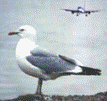Bird Strike Committee Proceedings

Bird Strike Committee-USA/Canada Joint Annual Meeting: 8th (2006)
Date of this Version
8-12-2006
Document Type
Article
Abstract
Airports often times employ different land uses on their airfields to generate or save funds. The application of bio-solids is one such use. Questions concerning this practice and its compatibility with safe aircraft operations arise; however, little information exists concerning this issue. FAA regulations and technical guidance do not currently prohibit this practice on airfields. Marine Corps Air Station Cherry Point, located in North Carolina, has applied treated bio-solids to portions of the airfield over the past 14 years; this program is anticipated to continue into the future. During 2003–2005, we conducted a study to compare plant community dynamics and wildlife use of grassland habitats related to bio-solids application. Airfield plant communities have been significantly altered by long-term bio-solids application. Grasslands where bio-solids were applied were dominated by tall fescue and bahiagrass, whereas plant species diversity was higher in control plots. Overall, bird use of plots appeared to be species-specific and was accented by seasonal differences. During winter months, observations of European starlings, eastern meadowlarks and other flocking birds increased in bio-solid plots relative to control plots. A total of 5 small mammals were captured over 4,000 trap-nights, indicating small mammal populations were similar between grassland areas. Patterns of white-tailed deer use of bio-solid and control plots were spurious; areas of higher deer use were most likely related to other habitat features (e.g., travel corridors). The bio-solids application program does not appear to have created a long-term wildlife attractant. Short-term and seasonal wildlife hazards that might occur can be mitigated through a proactive BASH management program.

